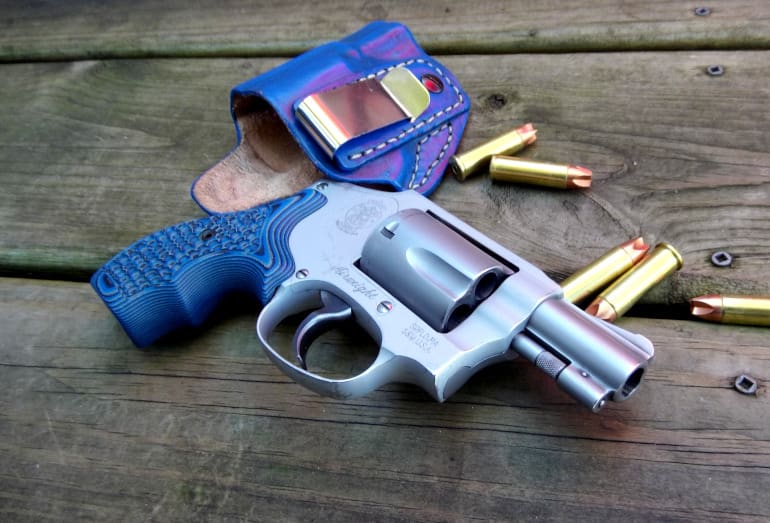
Handgun service life is something that’s often misunderstood. A handgun is, like any tool, just a man-made object that has moving parts. While not as simple as an inclined plane, handguns are relatively easy to grasp. In this article we will be looking at what service life is and what it means to the average shooter.
Service life means different things to different people. The basic definition of service life is twofold. The first is the period of time that a product can be used in a given role. The other is the expected lifetime of a product in general. For handguns this means, again, different things to different people. The U.S. military has a different set of requirements than your local police department for their service pistols, and you have different requirements than your range buddies.
For the purposes of this article we will be looking at a couple different ideas about service life. The first thing we’re going to look at is normal carry wear. The common carry gun is a friend that spends most of its life in a pocket or a holster and sleeps in the nightstand. It will typically be cared for years, but isn’t often pretty or nice to look at. Most carry guns that are well used have what we creatively call ‘carry wear’.
Wear is a natural part of handling any object. Any concealed carry gun that is in constant contact with holsters, body oil and sweat, natural humidity, and powder residue will inevitably begin to deteriorate. The act of firing is also hard on guns. Every shot taken and every time the slide is pulled results in microscopic wear.
Cleaning is another hazardous time for a firearm. Aggressive cleaning methods are responsible for more gun wear than almost any other activity they are used for. Even if a gun is well maintained, it will still wear on some level, even if it is just the surface finishes.
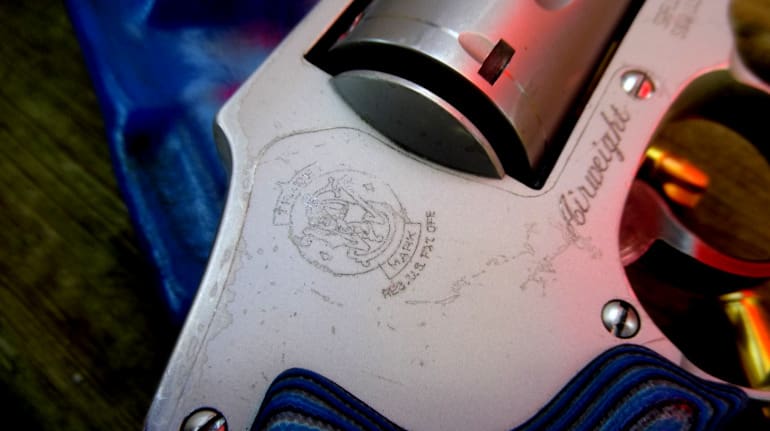
Cosmetic wear is extremely common. This results from constant holstering and drawing, rubbing against clothing and belts, being dropped or dragged, and just plain being around. Cosmetic wear is usually just on the surface, but it is a big deal to some people, even in their self-defense gun. I’ve heard it time and again that ‘the finish goes, the gun goes’, but this is folly.
I once owned a GLOCK 19 that was almost silver from use and carry. It went everywhere with me and looked like trash, but it worked every time. I do not see cosmetic wear as a real issue when it comes to service life. Just like a cordless drill, my carry gun is a tool with a job. As long as it functions, it gets to hang around.
Malfunctions in an otherwise reliable gun are an indicator that some parts are on their way out the door. Most problems with a gun can be solved by replacing parts like a firing pin or recoil spring. It isn’t common that the whole gun crap the bed at once unless you actually blow it up somehow. Accuracy and reliability go first in an aging gun, but these issues can usually be solved by replacing a few springs or replacing the barrel.
For many people, a semi-automatic gun just isn’t worth the repairs. A GLOCK 19 can be found today for about $400 used. If you pay full price for a Gen 5 G19, you’re looking at about $550 depending on where you buy it. The semi-automatic G19 will easily last 30,000 rounds without touching a thing on it.
Even then, all you’ll probably have to do is change the recoil spring, which takes about two seconds. The barrel is not likely to lose accuracy much at all during that span of rounds if you use non-abrasive cleaning methods. By the time such a high round count is hit, many people just sell the gun and buy a new one instead of paying parts replacement.
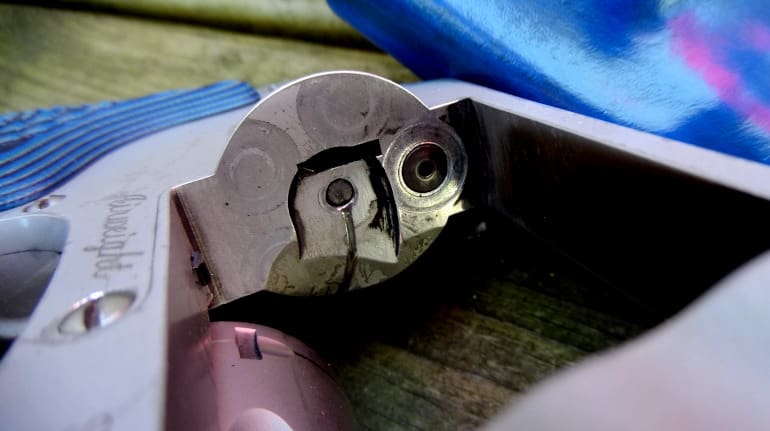
If you balk at a person firing 30,000 rounds, know that number can be reached in just a couple of seasons of shooting for dedicated competition pistol shooters. I asked a number of competition guys I know in my area about their round counts, and most fired about 25,000-50,000 in two seasons of matches and practice. Low end, that’s about 250 rounds a week over two seasons, which isn’t a crazy number.
Even if a person fired 250 rounds a month, they would still be putting 3,000 rounds a year on their gun. Combined with the holster wear and general abuse through regular concealed carry, many people never end up putting 10,000 rounds through a gun before they decide it has reached the end of its service life, despite the fact that most guns will last far beyond that.
My competition friends end up with ‘frankenguns’, which are often the result of a factory gun being slowly taken over by aftermarket parts. As a recoil spring or barrel wears and reaches the end of its service life, they replace it with a competition grade version and so on until they have replaced most of the gun. One guy I knew bought a new frame to replace the old one on his G34 and found that he was able to assemble a complete factory G34 from all the parts he had replaced over time. (In my opinion, he now has the same gun in two locations. I am curious as to what fellow students of metaphysics will have to say in the comments about this one. Look into the ‘Ship of Theseus’ if you’re curious about this.)
A good case of wear and abuse is the story of my Smith & Wesson Model 642. I got the gun new from a local sports store about three years ago and I’ve carried it every day since. I estimate that this gun has seen about 15,000 rounds since I bought it. Most of these were cheap lead reloads that I crank out by the thousand every month or so, but it does regularly see factory +P loads as well.
The finish of the gun went first. The even grey color wore off in most places. The edges on the gun are highly polished from my pockets, backpack, holster, and general handling. The springs have never been replaced, nor has any part except the grips, but those were installed almost from day one. I have noticed that the gun’s accuracy has not changed in all this time. It still shoots like it did out of the box, but the trigger is noticeably smoother than a factory-new gun.
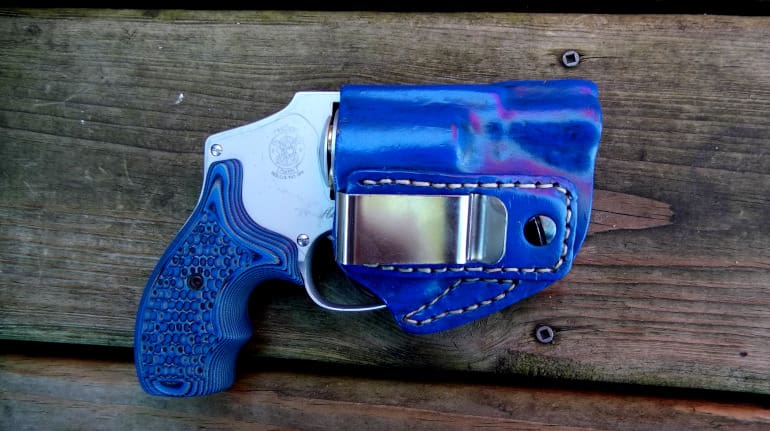
Despite the fact that it has seen more use and abuse than most pocket snubbies ever do, it is still kicking and is in my pocket as I write this. If I disregard the finish wear, there is nothing at all wrong with the gun mechanically. I may be do for an internal cleaning soon, but that’s about it. I’ve had only two failures to fire in the entire time I’ve spent pulling the trigger on the 642 and they were in reloads. I am very confident that it will go bang when I need it to.
So when would I consider replacing my little blue gun? I don’t know, to be honest. I have not had a problem with it yet and I consider three years/5,000 rounds a year to be too short a time to retire it. But I know guys who have shelved or sold their G43 (or Sig Sauer or Beretta or Ruger or Remington) after only two years of what I consider light use and bought new pistols. While they may tire out a spring, I believe it to be safe to say that most people will never successfully wear a handgun out. It is my opinion that most people simply tire of their handguns and want something new, thus ending a particular gun’s service life.



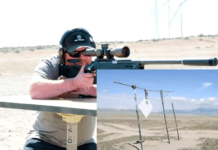
cz.
Way to go TTAG not reporting on the mass shooting in Highland Park,ILL. 6 dead & dozens hospitalized. The punk is still at large.
That’s what CNN is for.
Is that you Miner49er?
Dan did, in fact, post a report soon after you complained. It takes time to learn of an event, confirm facts, and write the article. It’s also possible Dan was with family today for the holiday and wasn’t sitting at a desk just staring at his phone or PC.
So you defend them when you’re deleted for the dumbest reason? Huh Haz???
You’re awfully angry, WW.
Mellowness on a day like today… 🙂
Not a fair criticism Walker.
Stories take time.
Also prayers to the families who were stricken/attacked by evil today.
Anyone here not able to recite the standard prog/msm narriative?
I have to wonder if some/all of the polymer framed handguns chambered in .40 S&W will be at risk of the polymer frame cracking after several thousand rounds. I only say that because so many people claim that .40 S&W is “snappy”–pushing significantly heavier bullets than 9mm Luger at the same velocities–in handguns whose frames the manufacturers originally designed for 9mm Luger recoil energies.
“have to wonder if some/all of the polymer framed handguns chambered in .40 S&W will be at risk of the polymer frame cracking after several thousand rounds”
I’ve put several thousand through my Glock 22 .40 S&W. Frame hasn’t cracked.
Polymer tends to flex before it will crack. It a polymer frame cracks its usually a sign there was a hidden defect in the material or the frame was subjected to forces along a weak point in a direction contrary to an axis line of forces the frame was designed for or the frame is simply not strong enough to withstand the force’s its subjected to. And although I guess it could happen, and has, its not an epidemic kind of thing.
https://en.m.wikipedia.org/wiki/Polymer_degradation
30,000 rounds is nothing. I fired that and a little more in a four month period last year. I’ve got some high mileage guns, still run like brand new…not pretty any more like they were new but they are gonna go bang when needed. My main carry gun, Glock model 22, shows its age some in its cosmetics minor dings and scratches but by golly its saved our lives when the time came.
A bullet doesn’t care if its a pretty gun or not, and I’ve never heard of a bad guy that said “wait…can ya shoot me with a nice looking gun?”
For competitive trap shooters, 50K rounds is just getting started. I’ve met competitive trap shooters who put 100K rounds onto a shotgun in a season. Not in their “life” or the “life of the gun” – in one season.
This is why the high-end shotguns have such a following among competitors: those high-end shotguns that run $8K to $12K cost that much because they hold up to those round counts, then they get a look-over during the winter, and next season, they’re out on the trap line, firing another 100K rounds.
Perazzi, Krieghoff, high-end Browning, Beretta, etc – these high-end guns aren’t just pretty. They are designed to handle the wear.
My 642 was carried so much and for so long the rubber on the original boot grips separated from the plastic core. S&W hooked me up, however I found that the Hogue Tamer grips make it nearly a “shoot all day” gun, so I’m rockin’ those currently. The finish is about as described in the article.
I have ‘Tamer’ grips on my LCR in .357.
While not quite ‘shoot all day’, it’s loads more comfortable…
I don’t even want to total up the number of rounds that have gone through my old 1911. The frame and slide are the originals that were in the pistol when I bought it. And, I think the screws holding the grip scales are the same. Springs, pins, bushings, barrel, trigger assembly, hammer, grip slabs, and sights have all been replaced at some point. Put an ambi safety on many years ago.
The old war horse may not be pretty, but it will do everything I ask of it.
Service life is a rather complicated topic, and there are lots of things you can do to extend the service life, and lots of things you can do to decrease the service life.
Handguns can see a longer service life than many rifles, especially overbore cartridge rifles, which will tend to burn out their throats earlier. Revolvers shot with moderate loads can last a long time, but if you shoot hot, heavy loads out of light-framed revolvers (especially S&W’s lighter frame revolvers), you can cut the top strap and even elongate the window over time. Once these issues reach a certain point, the gun is done, there’s no way to repair this damage.
In revolvers, the other things that wear that can be fixed:
– bolts, or cylinder stops (they’re the same thing, just a different name)
– hands or pawls
– ratchets
– fractured forcing cone (which is just part of the barrel)
In semi-auto handguns, you can have frame cracking and barrel issues
– recoil springs
– extractors
– magazines (the cause of most semi-auto malfunctions)
– barrels
In revolvers shooting cast bullets, you might have leading in the forcing cone. Invest in a Lewis Lead Remover. Don’t try to chip it out with a screwdriver or awl, for crying out loud. Go get the real tool for the job.
Most guns that I see that have reached the limit of their life haven’t reached the end of that life due to firing wear (ie, a high round count). They’ve reached the end of the road because they’ve been mis-treated by Bubba the Shadetreee Gun Hack. Screws have been tortured with Sears or Snap-on screwdrivers, people have scrubbed on the gun with wire brushes, caustic cleaners, etc. They’ve had ham-handed repairs done and parts modified in ways that there is no way to come back, etc.
The best example I can think of are high-end .22LR rifles that have been cleaned obsessively with wire bore brushes. There’s no need for this. I see some people sawing a damn brush back and forth in .22LR rifles like they’re cutting a log. No idea why.
Most of my gunms get lost in the brush because the string breaks.
Then I spend most of the night back tracking the string, sometimes I find them and sometimes I dont.
I have the same problem!
And my guns fall out of the boat duck hunting ALL the time.
You will never convince the average ignorant Hillbilly that a gun is a machine just like an automobile is a machine and both eventually wear out and then stop working. Its even worse today as compared to years gone by when guns were made of high quality long lasting parts. Today guns are made from the cheapest materials possible such as junk brittle MIM Cast parts as well as stamped sheet metal and plasticky parts. Putting a lot of rounds through many modern handguns is just taking a chance that they will actually work in a crisis situation.
The man that has any grey matter between his ears buys a gun and test fires it with the ammo he will be using and then he never shoots it again. When he practices, he usually uses a duplicate gun or if that is not affordable, he uses a .22 rimfire that is much cheaper to practice with.
I have a .22 Magnum S&W revolver with an alloy cylinder and frame. I believe the S&W rep said the company certainly knows they are not as durable as steel cylinders, but it takes a lot of shooting to erode the front of the cylinder, and they will certainly repair or replace any that do develop that problem.
Longevity of firearms is a known quantity with rental ranges. One in Vegas has seen 90k rounds thru Glocks before slide cracking is noticeable. The 4th gens came in early at 45k. Glock replaces them all and that 4th gen anomaly is still long lived – even at 5,000 rounds a year it’s 9 years life and as pointed out, thats a long time in a shooters hands – these days they’ve moved on to another gun. In some circles 3-5 years is slow turnover.
Other guns at that range show earlier issues, 1911’s across the board are often broken by 25k and that seems to be across the board. An M17 already needed a spring replacement by then – on a rough average 25k is a threshold seen by many to be noted. The Canik series are lasting much longer than anticipated, no round count presented but no failures yet.
The average gun owner and how many rounds a year he shoots is the key – a once monthly box or two range session is only 1,200 rounds a year – not cheap these days however. With a 25k window of not likely breaking anything, that’s still 20 years of service. Now, consider a used police firearm – often traded in at 10-15 years – one picked up from a fleet turnin would still have five years of shooting in it with largely no issue. Thats why LEO trade ins can be a good buy. I have a S&W 4566 TSW tradein from the mid 90s that is a bit rough outside from carry but inside barely broken in. PD’s just dont throw ammo around and officers aren’t required to do more than show proficiency not John Wick levels of excellence. Not that many shoot in competition or even on their own. At worst I’d consider that 4566 to be maybe 45-50% into its service life.
Hunting firearms often see a lot less, they get ranged in beginning of each season, thats 20, at most ten more during the next 20 hunting days, and back in the rack after cleaning to wait another year. Less than 50 a year in a rifle? My ten year old 6.8SPC may have seen 125 rounds by now. A lot of working fathers punching the clock are busy weekends and range time can be extremely limited. And after 10-15 years maybe a new rifle or cartridge intrudes and we restart the counter all over.
Anyone shooting 10k rounds a year will see a gun possibly wear and need parts replacement in 2-3 years, for most of us getting them broken in at all would be a goal that takes 8-10 years. With lack of open range, fees, driving, ammo costs, and opportunity scheduling, shooting the life out of a firearm has to be worked at harder than a job in some cases.
I can’t believe I missed this post. As I read it I have a 442 in a Rosen pocket holster in my R/F. It sports a set of Spiegel Boot Grips. I first strapped it to my ankle in 1991. It was in a Galco Ankle Glove. I still have the holster today. It’s well worn, but still serviceable. However, the revolver. My 442 is one of the most trustworthy handguns I have ever owned. The action is as slick as snot on an oyster. Those Spiegel’s? I can’t tell you what they’re made of. I think they’re rosewood, but they have become so darkened from my hands I’m no longer sure. Finish? What finish? That left this little revolver years ago. I’ll tell you two last things. I own newer, more modern, semi-auto, polymer framed pistols that hold more rounds. (They’re good pistols.) That was the first thing. The next thing is I can’t leave that 442 alone because I can wear your ass out with it.
Service life was the original question and the author spoke of his 642. My 442 has seen serious, hard use. No issues. I think so much of this weapons platform that I gave Mike’s stepson a 642 for a graduation gift last month. If you don’t own a J frame, you have a serious gap in your firearms battery.
“If you don’t own a J frame, you have a serious gap in your firearms battery.”
Yup, I second that remark. Mine’s a 642.
Forgot to say. Good article.
I have black powder from the early 1800s, Civil War Revolvers, and even an old 1700s flintlock pistol that I still take to the range from time to time. I have a small pile of WWI semi auto pistols that go to the range with me on a regular basis, especially my old Luger and 1911 (love to take the opposing powers pistols out together).
Metal working has come a long way, firearm designs are simpler than ever, and almost no modern ammo is corrosive. While I’m sure eventually I’ll run into broken firing pins, worn springs, and broken extractors, I’m not terribly worried about my service life. By that point, I will have spent several times the funds on ammo that the gun is worth
I have a Colt 1911 from the 70’s that has lasted 50,000 rounds. I have replaced the recoil spring every 2,000 to 3,000 rounds and the barrel is still good. I shot a combination of lead and copper plated bullets in it for most of those rounds. The loads are not to strong velocity is about 700 fps. I have now retired it and don’t shoot it much, but then again I don’t shoot as much as I used to. If I were to have it reblued and a new barrel put in it, it should last at least another 20,000 rounds and look great. I replaced the slide stop and because it broke and all of the springs a couple of times. I also replaced the extractor because it was losing its tension very quickly.
THANK FOR NICE INFORMATION, VISIT OUR WEBSITE : https://telkomuniversity.ac.id/
I have read your writings and I have read articles on this topic in several articles from other sources. I got a lot of information from your writing, is there any other suggestions you can convey regarding the theme of your writing? so that I can get more and more complete information.
I certainly thank you for writing this article well, hopefully it will become a reference in journals or other scientific writings and can help many people. thanks.
All the sections are explained beautifully. Keep sharing such articles.
What is the significance of “Handgun Service Life” and how is it determined?
Service life means different things to different people.
Telkom University
How has “The Truth About Guns” blog evolved over time, and what impact has it had on shaping public perceptions and discussions surrounding firearms, gun safety, and related issues?
Comments are closed.